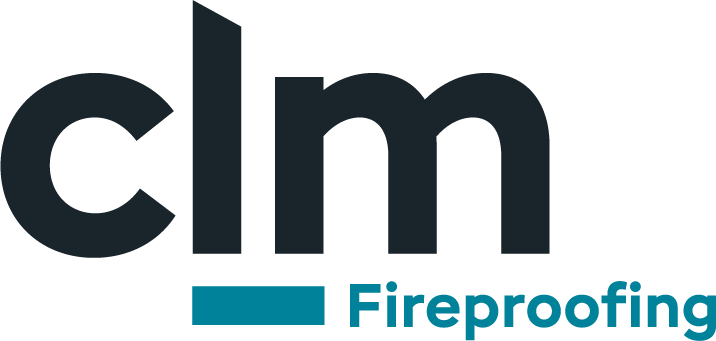Structural steel is one of the most commonly used construction materials. Valued for its durability, speed of construction and strength, it is utilised for various structural elements including beams, columns, channels and hollow sections. Given its importance to structural integrity, steel must be shielded from fire damage. In this post, we’ll explore the fire resistance standards of structural steel and how it can be improved through the use of spray-on fireproofing.
Understanding the critical temperature of structural steel
The critical temperature of steel is the temperature at which it loses its load-bearing capacity. Manufacturers of structural steel must state the critical temperature of their products, and how it changes in relation to its use. Importantly, the UK and the EU have differed in how they assess and report the critical temperatures of structural steel.
In the UK, regulatory bodies have traditionally taken a default approach, assigning a limit failure temperature of structural steel according to broad usage categories. According to British standards, steel beams carrying a concrete floor slab should have a critical failure temperature of 620°C, whilst steel columns exposed on four sides should have a limit of 550°C. These are based on several assumptions (including load weight in a fire situation) and are stated by manufacturers alongside the A/V (HP/A) calculations as to the required thickness of their materials.
European rules, on the other hand, are more specific. The ‘Structural Eurocodes’ (the EU’s rules for the design of construction works) stipulate that the critical temperature of a steel structure is determined by its anticipated load-bearing strength. Both BS 5950 Part 8 and Eurocodes are available for the design of structural steel in a fire in the UK. The Eurocodes suite consists of: BS EN 1991-1-2, BS EN 1993-1-2 and BS EN 1994-1-2. According to BS EN 1992-1-2, for instance, a fully loaded non-composite beam carrying a concrete floor slab in an office building has a critical temperature of 603°C, whilst a similar beam that is not fully loaded has a far higher expected limiting temperature.
Fire protection requirements for structural steel
It’s worth noting here that the application of the Eurocodes to UK construction projects will continue (for an indeterminate period) after Brexit, as it facilitates supplier relationships in the construction industry across the UK/EU. As such, it’s useful to know about the main EU regulations relating to the fire protection of structural steel:
● BS EN 1991: Actions on Structures. General Actions. Part 1.2 Actions on structure exposed to fire – This Eurocode deals with the thermal and mechanical actions on structures exposed to fire and provides rules for designing structures for fire resistance.
Intumescent paint for steel buildings regulations
Intumescent paint is commonly regarded as one of the best ways of fireproofing structural steel. When exposed to extreme heat, it expands (Intumesces) to create a protective carbonaceous layer (Char) around the steel. This layer lengthens the rate of heat transfer, delaying the time for the steel to reach its critical temperature.
For the intumescent paint to provide the required fire resistance, structural steel beams must be installed with a gap to accommodate its expansion. The Association for Specialist Fire Protection (ASFP) recommends a gap of between 25 and 75mm, which is approximately 50 times the initial thickness of the intumescent paint (unless stated otherwise by the manufacturer).
In July 2020, the ASFP released an updated range of ‘Advisory Notes,’ to provide further clarification on intumescent fire protection best practice. An important example is the fixing of partitions to any columns or beams that have been coated with intumescent paint. This is not advised, as it can both hinder the paint’s capacity for expansion and create a direct heat transfer in the event of a fire. Both of these scenarios are sure to undermine the steel’s strength and load-bearing capabilities under fire conditions.
Protecting steel structures from fire
With more scrutiny than ever on structural fire safety, the resistance of structural steel is of particular importance. Project managers and developers need to be aware of the many complex rules surrounding the fire protection of structural steel. When assessed and addressed by an experienced fire protection professional, structural steel can be shielded against fire damage, limiting the risk to occupants and property.
If you’re looking for expert spray-applied fireproofing, get in contact with CLM Fireproofing. As the UK’s leading intumescent paint contractors, we combine industry-leading technology, with years of experience to provide protection for both residential and commercial buildings.



